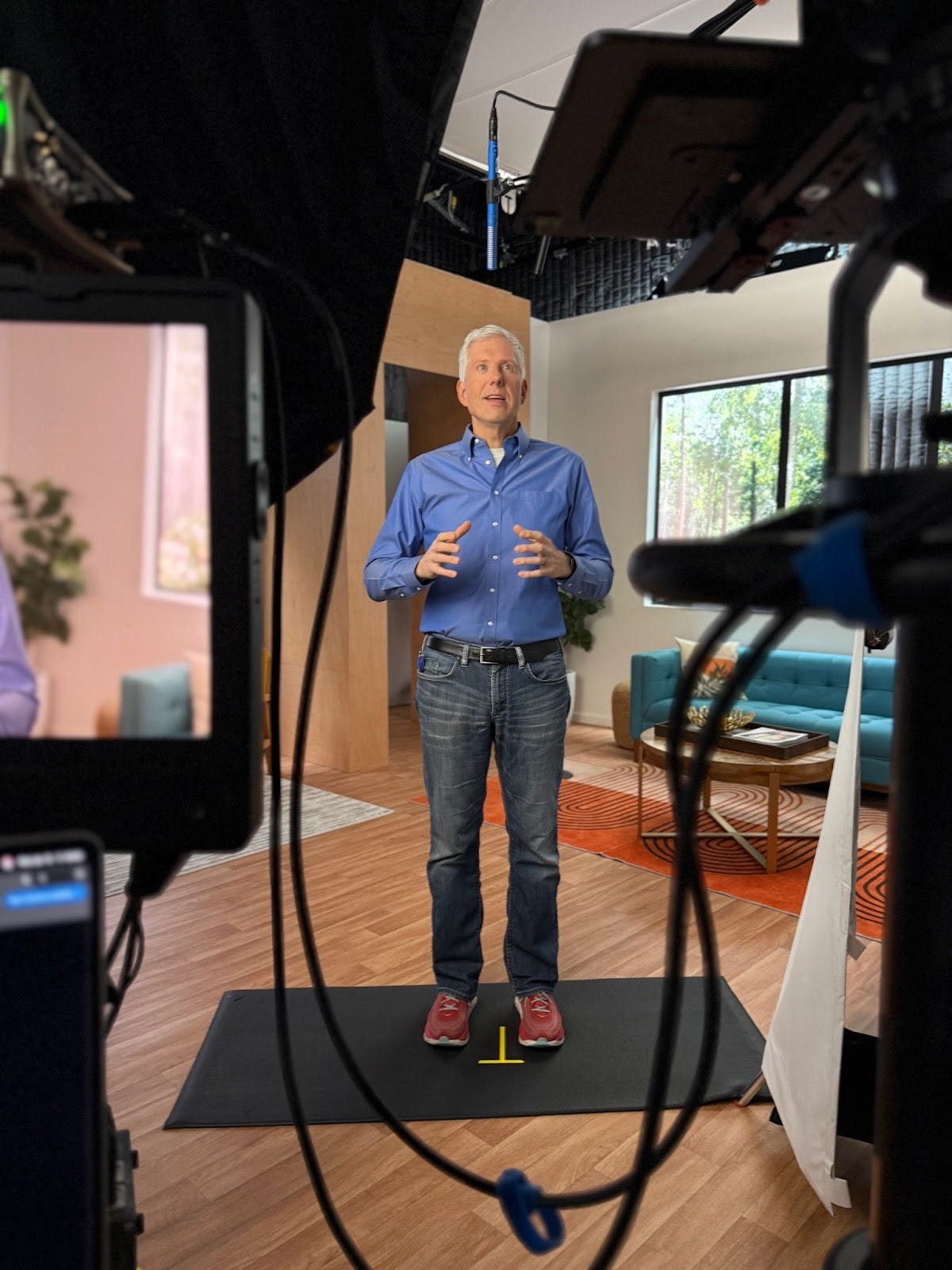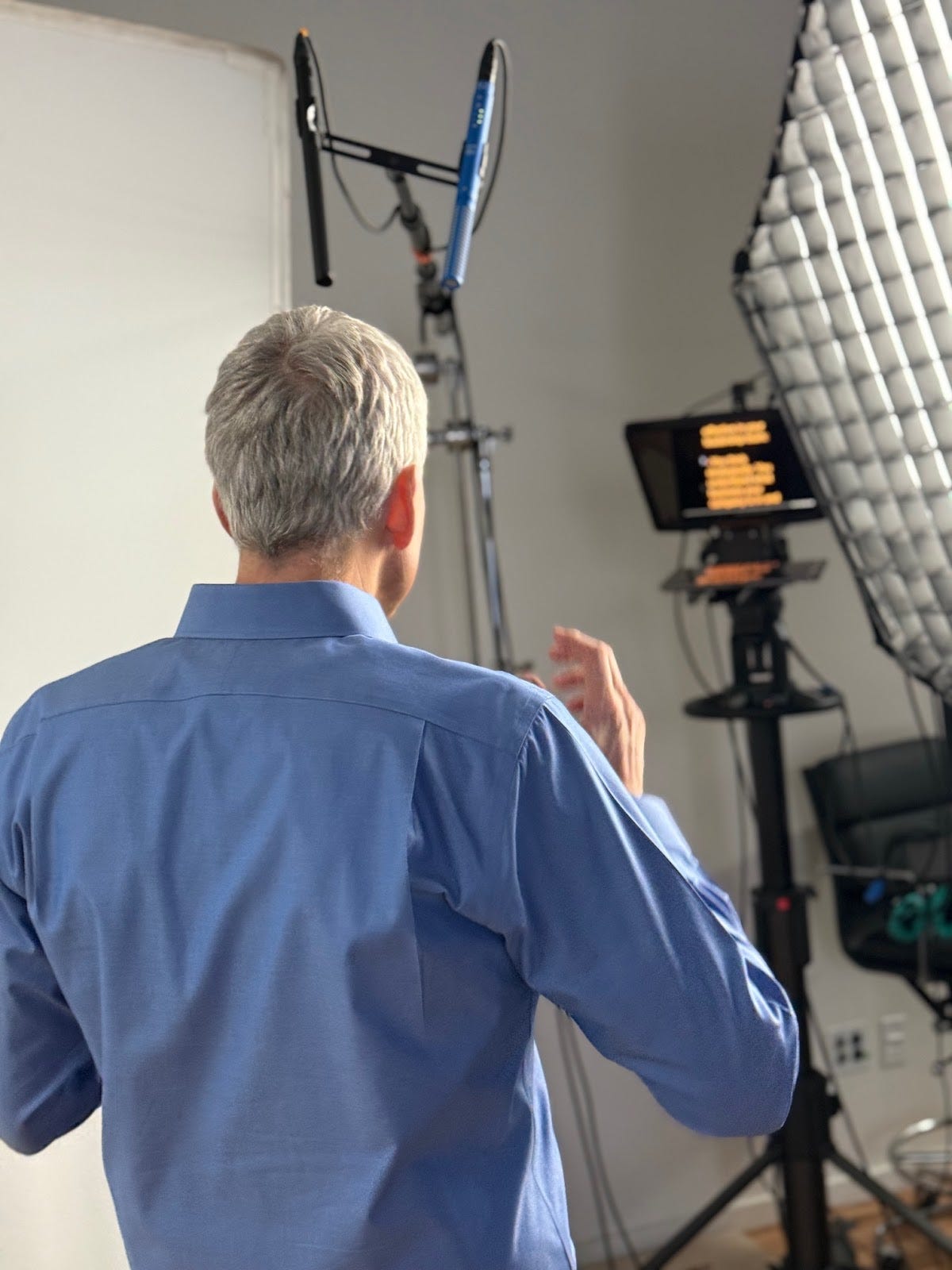Think, test, learn, repeat
My LinkedIn Learning experience, lessons, and 3 questions to guide your own cycles of “Think, Test, Learn” in your career and life
Ethan & Jason here—welcome to a *paid member-only* edition of Level Up: Your source for executive insights, high performance habits, and specific career growth actions.
Many paid subscribers expense this newsletter to their Learning & Development budget, here’s an email template to send to your manager.
If you are not a paid subscriber, here’s popular articles you missed:
Amazon taught me that success in business takes work, but it is rarely complicated.
The “Think-test-learn-repeat” cycle helped me build multiple billion-dollar businesses at Amazon, and it helped me build my current business.
I am still applying this method to learn and build new things, and I will walk you through my most recent example so you can learn the framework here and now.
Overlapping Cycles
A few months ago, LinkedIn Learning emailed me out of the blue and asked me to record a class for them. In this case, LinkedIn was applying the cycle to find content creators with whom they could partner. Presumably, they thought about a number of creators, contacted some, and moved on to the “test” phase.
They were testing me out as a course creator.
On my end, they did much of the “thinking” for me. They reached out, I was not actively thinking about new courses and new platforms that I could use for teaching. So, my cycle began at “test” after quickly saying yes to their proposal. I was going to test if I liked teaching for them.
In this example, just like almost every real-world scenario, we have overlapping “think, test, learn” cycles. We had LinkedIn’s cycle that they were employing either knowingly or unknowingly, and we had my cycle that kicked off when they reached out. However, there were also historical cycles present. For example, I have already gone through many “think, test, learn, repeat” cycles with my own teaching. I have learned that I like teaching and that many people like my teaching. This is also something that LinkedIn likely discovered in their research about me before reaching out.
The point here is that “think-test-learn” is not a one-off tool; it is an iterative process.
This is why “repeat” is tacked on at the end, but I would also add the caveat that it is not simply repetition that makes the process powerful.
“Think, test, learn, repeat” becomes a useful long-term tool for building new opportunities when the repetition comes in the form of taking previous learnings and using them in subsequent cycles.
Now that we have the theory out of the way, I will share a few different things in this newsletter to give you a practical picture of how the cycle works:
How I use “Think, test, learn” to build and hone products
What I learned filming my class with LinkedIn
What I will test next as a result
This will take a little reading, but if you commit to learning I promise it will be worth it!
“Think”
As I mentioned above, much of the “thinking” for this specific cycle had already been done—LinkedIn had researched creators, and I had learned over the last many years that I like to teach.
So, when LinkedIn invited me to make a class, it was easy to skip to the testing phase.
Up until now, I’ve always made my own classes using platforms like Maven and Kajabi. I have created a mix of live and recorded classes that have maintained high ratings and gotten good feedback. But, Maven and Kajabi do not help you teach. They are software platforms where you can host classes, but designing and building the course is left to the instructor.
So, in addition to testing how a course of mine performs on LinkedIn Learning, this would also be a test of collaborative class creation.
Having never done this before, I had my goal for the “learn” part of the cycle set out: learn how LinkedIn makes courses and get better at making my own.
*Note: We don’t always know what we are going to learn while in the “test” phase, but this time I knew what I wanted to learn. I was open to learning anything else during the test, but I had a specific goal going in.
“Test” — In the Studio
Have you ever wondered what it is like to spend three days filming in a studio with a professional crew around you? What about how to create an entire professional development course, from first concept to final product?
I thought that I had some experience with this stuff, but I quickly discovered that LinkedIn is a massive course-creation machine.
They have this process dialed down to the details.
After signing the paperwork, I was assigned a producer. He explained to me how LinkedIn structures their courses, which is as a collection of short videos that are three to five minutes long. They target a total course time of no more than an hour.
This was the first challenge. Up until that point, my shortest current classes are 60 to 90 minutes and are recorded as one long video. In editing, a post-producer cuts them apart for me into logical segments, which are still normally 5 to 15 minutes apiece.
So right away, I was learning about an alternative course structure. Given that LinkedIn has recorded many thousands of classes, I believe that they know what works for their audience.
My first task was to structure my class into 20 three to four-minute segments, each containing about 500 words. So, I went off to write scripts for every course. It is harder than you think to write 10,000 (20 x 500) quality words about a topic, especially in precise and logical chunks.
As a result, I was feeling a bit bad about my test.
The cost of the test in terms of effort was very high, and the payoff was uncertain.
However, I had made a commitment, so I powered through and wrote the scripts.
Filming
Once the scripts were complete, the producer scheduled me for three days of recording.
This was another learning moment. If I were recording a 60-minute course “my way,” I would schedule about 90 minutes with my local production house. We might re-record a few major blunders or problems, but mainly I would present the material to the camera as if it were a live course with an audience.
The idea of spending three days to record an hour of material was unbelievable to me, but I was there to learn.
So, I set aside three days and I boarded a flight.
LinkedIn Learning’s studios are in Carpinteria, California, a sleepy little beach town with just two main streets, 60 miles north of Los Angeles. The studios are in the old offices of Linda.com, an early learning startup that LinkedIn bought.
Walking into an office environment was strange because this was actually my first time back in an office for multiple days since I sent my team home at the start of the pandemic.
Since I retired later in 2020, I never went back to work in an office.
As a result, the LinkedIn offices gave me a strong sense of Déjà vu back to my Twitch and Amazon days. Daily catering of breakfast and lunch, snacks and fancy espresso machines in each kitchenette, cubicles, offices, people, etc. LinkedIn is pushing for a return to office across its sites, but the live studio production teams have been back in their offices for quite a while now.
After walking through the office, I met my producer in person, as well as the director and teleprompter operator. This team of three would be with me all day, every day, for three days.
One of the things I learned during my stay is that my course was getting the most premium level of production, recorded on a “live action” stage. Many courses are either recorded by their authors in their homes or recorded at the studio, but in green screen booths. My class was shot entirely on a sound stage, made up to look like an office.
I also learned that courses about online tools and APIs rarely feature the instructor's face, except to introduce them and to summarize at the end. So, they are fairly easy to film in booths or from the instructor’s home. During my three days of recording, a dozen live stages and many more booths were operating in parallel, with dozens more instructors filming at home.
As I said, LinkedIn is a course-creation machine.
Filming Step 1: Hair and makeup
I never knew how much work you could do to someone’s face without giving them any traditional makeup! It was a relatively short process, but I left with every hair held in place and the appearance of perfectly smooth and even skin.
As part of my learning process, I asked myself, should I do this before every class? Right now when I teach or record a class, I shave, comb my hair, and put on a nice shirt. Would going through the full aesthetic monty add more value?
Filming Step 2: Revisions
The actual filming process begins with a “test movie,” where I read a bit of the script in front of the camera. This test film is sent off to multiple reviewers, who apparently check everything from appearance to wardrobe to sound. Once the test movie is approved, we begin something called a “mumble read,” where I stand on the mark in front of the camera and read the script out loud. The point of this is to uncover wording that does not sound like natural speech even if it is “correct.”
This is a great example of smaller cycle of “Test and learn.” By testing out the script, we quickly learned that I write complex sentences that are hard to say in one breath. I also tend to write in a formal style, writing things like “do not and cannot rather than don’t and can’t. But, when we talk, we naturally use contractions.
After all of the tests and revisions, we completed five short videos by about 2:30 PM on our first day. The crew then goes to review the recordings, although exactly what they are doing is not discussed.
After that initial test, the learnings are:
How different it is to write for words you intend to speak out loud
How hard it is to say 500 words with zero stumbles
If you want insights on effective LinkedIn writing, read the guest newsletter post from our editor, Daniel.
And, if you want to go deeper on your professional development with courses, see our catalog of Maven live online courses and Kajabi video-on-demand (VOD) courses to find one that fits your goals.
Teleprompter PTSD
I came into this experience with a bit of “PTSD” about teleprompters.
I had only used a teleprompter once before while giving a TwitchCon keynote address in front of 1500 live fans and about 70,000 more watching online. This is the largest live audience I have ever addressed.








